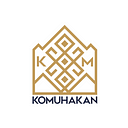Birth Rituals of the Kadazandusun
Written by Faith Richard | Edited by Shireen Ali and Velvette Rozelle Roger | Published for the Komuhakan Movement
The beautiful journey of motherhood is often heralded in traditional communities as a sacred chapter of life, honoured with dedicated customs and lore. The Kadazandusun people are no different when it comes to respecting and cherishing our mothers.
From pregnancy all the way up to the delivery of the baby, the well-being of the mother is placed in the hands of the midwife — an elderly woman of high esteem amongst the villagers. The midwife plays a crucial role in caring for the mother before, during, and after childbirth. She guides the expecting mother through numerous aspects of motherhood, such as reminding her of the important taboos to obey, preparing traditional medicine from the roots of trees, herbs, and other organic sources, as well as massaging the mother before and after the delivery of the baby to soothe and relieve labour pains.
Taboos
Based on analyses conducted by Blust (1981), the common term for taboos — pali or busuŋ — had been reconstructed by another researcher named Otto Dempwolff. In conjunction with traditional customs, violating or breaching any taboo will result in consequences to the wrongdoer.
Disrespecting the elders (or any socially superior individual) in the village represents the most severe taboo violation possible in the Kadazan society. Those who transgress against the elderly will suffer abdominal swelling. The category of ‘elders’ or ‘older people’ broadens to include inanimate objects in the definition as well. In the Kadazan language, specific terms such as vusuŋ/momusuŋ/pokovusuŋ exist, which mean ‘to curse someone.’
Many taboos are to be observed during pregnancy. According to On and Ishak (2018), pregnant women nearing their due dates are advised to bathe in komburongo leaves to dispel winds from the body, cure any ailments on the skin, and to ensure the future mother’s general good health by preventing the onslaught of spiritual or mystic disturbances. Moreover, in late stages of the pregnancy, the Kadazan wife and husband are prohibited from shutting or tying any items lest they face difficulties or obstructions during childbirth.

Chen (1975) also noted how the father must also not pierce a buffalo’s nose or mark a buffalo’s ear, or else the child will be born with birthmarks corresponding to the parts of the buffalo branded by the father. Taboos also encompass the consumption of various kinds of food. For instance, the mother must not eat jack-fruit, nor sweet or sour foods, for fear of the child being born ill.
After Giving Birth
When a Kadazan woman enters labour, the wongkong leaf will be hung over the door frame to notify residents of the newly welcomed child, and serves as an invitation for guests to enter the room.
To the Kadazan in the Membakut district, the komburongo is commonly used as an amulet as part of customs surrounding birth. The dried roots of the komburongo are cut into pieces and shaped into a necklace to be worn by the baby. The talisman is said to prevent disturbances from evil spirits, which would cause the child to cry incessantly. Furthermore, komburongo plants are sown around the family’s home as a safety precaution to bar the entry of malevolent entities.
Apart from that, the newborn should not be brought out in public — not even to the verandah of the house — until considered strong enough to do so. To ward off the rogon gaiyoh (malevolent spirits); small, open-mouthed bells and clappers are worn around the baby’s neck.
In native lore, diseases such as cholera, pneumonia, and malaria are believed to be afflictions by the rogon. Therefore, an altar (podsurungan) containing eggs, rice, betel nuts, bitter leaves, tobacco, rolled palm leaves, and rice wine must be set up as an offering to appease the rogon and keep such illnesses at bay (Chen, 1975).
Naming Ceremonies
Conventionally, the name of the newborn baby will be chosen by the grandparents. Names selected are usually inspired by the natural world, such as derivations of the names of trees and animals. Examples of traditional Kadazan names for boys include Gimbang, Kunul, Kerupang, Galumau, Gantuong, Empurut, Ampingan, Sangan whereas Semitah, Rengkumas, Ansayu, Baimin, Salud, Amin, Nani and Mainah are classic names for Kadazan girls. Barlocco (2010) observed that the Kadazan people hold a celebration known as the ‘full moon birthday’, which takes place when the newborn turns one-month old. This event is followed by the shaving of the child’s head for the first time.
In Essence
The respect and love we have for our mothers are accented by the care we take in observing the warm traditions surrounding pregnancy and birth. Integral to the family values embedded within Kadazandusun society, these customs serve as an homage to the women who nurture the young seeds of our community.
References
- Barlocco, F. (2010). ‘The village as a ‘community of practice’: constitution of village belonging through leisure sociality.’ Journal of the Humanities and Social Sciences of Southeast Asia, Volume 166, №4, pp. 404–425. Available at: [https://www.jstor.org/stable/41000135]
- Chen, P. C. (1975). ‘Medical systems in Malaysia: Cultural bases and differential use.’ Social Science & Medicine, Vol. 9, №3, pp. 171–180. Available at: [https://psycnet.apa.org/record/1975-28174-001]
- Joshua Project. ‘Kadazan Customs.’ Available at: [https://joshuaproject.net/assets/media/profiles/text/t00302.pdf]
- On, L. K., & Ishak, S. (2018). The Spiritual Significance Of Komburongo In The Folk Beliefs Of The Dusunic Peoples Of North Borneo. Folklore, Vol. 71. Available at: [https://www.semanticscholar.org/paper/The-Spiritual-Significance-of-Komburongo-in-the-of-On-Ishak/1434c505e3c45864edc8878df830eed1e51251b6]
Images
- On, L. K., & Ishak, S. (2018). The Spiritual Significance Of Komburongo In The Folk Beliefs Of The Dusunic Peoples Of North Borneo. Folklore, Vol. 71, p. 185. Available at: [https://www.semanticscholar.org/paper/The-Spiritual-Significance-of-Komburongo-in-the-of-On-Ishak/1434c505e3c45864edc8878df830eed1e51251b6]
